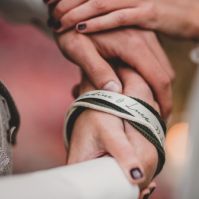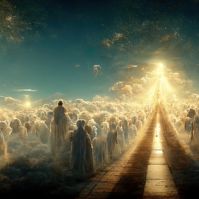Throughout history, religious festivals have been important markers of cultural identity and community connection. Today, many of these ancient celebrations are making a comeback, giving people a way to connect with their heritage. From sacred rituals to joyful events, these revived traditions give us a glimpse into the past while bringing people together in new ways.
Why Ancient Festivals are Making a Comeback
In recent years, more people have shown interest in ancient religious festivals that had mostly faded away. People want to reconnect with traditional practices that offer a sense of identity, meaning, and continuity. This revival often happens because modern life feels disconnected, and people look for deeper spiritual experiences beyond their daily routines.
These festivals give people a chance to embrace their cultural roots and keep important traditions alive. They bring communities together to celebrate shared values and honor sacred customs that might otherwise be forgotten. Many people also find comfort in the natural cycles these festivals celebrate, like the changing seasons, which offer a balanced approach to well-being.
Examples of Ancient Festivals Revived
Samhain
Samhain, an ancient Celtic festival that marks the end of the harvest and the start of winter, has seen a revival in both pagan communities and mainstream Halloween celebrations. Traditionally, Samhain was a time when the boundary between the living and the dead was thin, allowing spirits to cross over. Today, many people celebrate Samhain by holding rituals to honor ancestors, lighting bonfires, and enjoying the changing season.
In modern times, Samhain has influenced Halloween, combining ancient customs with newer traditions. Neo-pagan groups and people interested in Celtic history have brought back original Samhain practices like storytelling, divination, and honoring loved ones who have passed away in a more spiritual way.
Holi
The Hindu festival of Holi, also called the Festival of Colors, is an ancient celebration that marks the start of spring and the victory of good over evil. Traditionally, Holi is celebrated with bonfires, music, dance, and throwing colored powders. In recent years, Holi has spread far beyond India, with public celebrations now taking place in cities all over the world.
The popularity of Holi in places like the United States and Europe shows that people want joyful experiences that break down social barriers. In these modern versions, Holi has become a symbol of unity, allowing people from different backgrounds to come together in a celebration of color, laughter, and life. Even though some things have changed, Holi still remains a joyful celebration of renewal and connection.
Zoroastrian Sadeh Festival
Sadeh, an ancient Zoroastrian festival that dates back to pre-Islamic Persia, celebrates the triumph of light over darkness. Traditionally held in winter, Sadeh marks the halfway point to the spring equinox and honors fire, which is central to Zoroastrian belief. Today, Zoroastrian communities around the world have revived this festival, especially in parts of Iran and among the Zoroastrian diaspora.
The revival of Sadeh shows a desire to reclaim cultural heritage in a world that often emphasizes sameness. By lighting bonfires, gathering as a community, and sharing stories, participants in Sadeh honor the resilience of their faith and the importance of light—both literally and symbolically—during the darkest part of the year.
How Festivals Connect the Past and Present
Reviving these ancient festivals shows that people have a deep need for ritual and connection. By celebrating these festivals, people are not only keeping cultural heritage alive but also adapting it to fit modern needs and values. Whether through Samhain’s connection to nature, Holi’s focus on unity and joy, or Sadeh’s celebration of light, these revived traditions create a link between the past and present.
These festivals also give people a break from the fast pace of daily life, allowing them to experience something timeless and meaningful. They remind us that, even with changes in technology and society, the basic human desire to gather, celebrate, and find meaning in life’s cycles is still the same.
The Lasting Impact of Ancient Festivals
Ancient religious festivals that are being revived today do more than honor old customs—they give people a sense of belonging, unity, and spiritual fulfillment. Whether reconnecting with ancestral traditions or enjoying the simple joy of celebrating together, these festivals bridge generations and show us the lasting power of ritual in shaping our lives.



